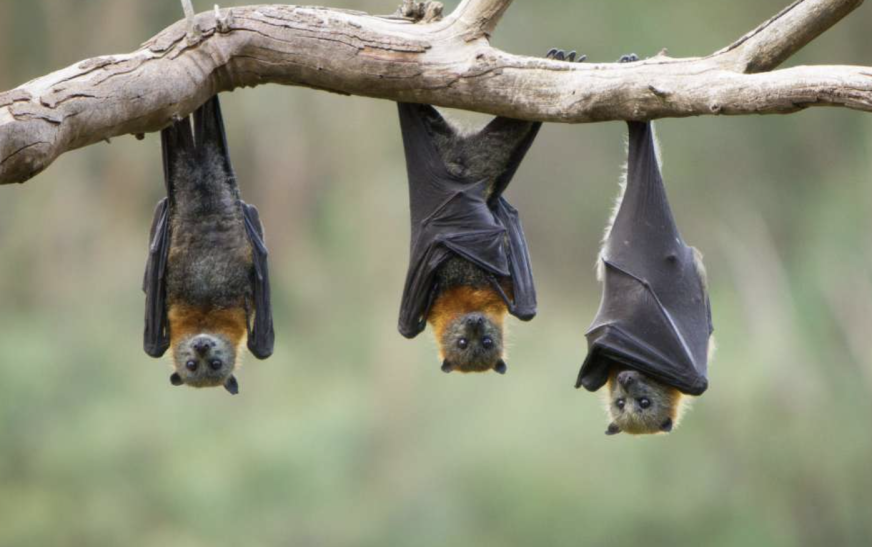In The Extreme Nature of Bats, filmmaker Greg Passmore takes viewers on a captivating exploration of bats, debunking myths and shedding light on the real lives of these misunderstood creatures. Greg, who has been fascinated by caves since childhood, has had a long-standing relationship with bats. Growing up exploring caves, he became accustomed to these creatures, who often accompanied him during his adventures. He explains, “Bats are incredibly intriguing, with intricate social structures and vast underground cities. They glide through dark cave passages at remarkable speeds, and their ability to fly is truly awe-inspiring.” When the chance to create a documentary about bats arose, Greg eagerly accepted, knowing that the creatures’ mysterious nature and connection to popular folklore would make for a compelling story.
Filming these elusive creatures is no easy feat, and Greg’s team faced numerous challenges while capturing footage. “We had to ensure both our safety and the bats’ well-being,” he says. “On many of our trips, we worked alongside bat biologists who specialized in mammalian research. In Mexico, we received support from the government to film the elusive vampire bats.” The crew took extensive precautions to avoid contaminating the caves with harmful fungus or pathogens. They wore protective clothing, used air filtration systems to protect against diseases like histoplasmosis, and were vaccinated against rabies before entering caves known to have the virus present in the air. Despite these precautions, they were careful to remain as unobtrusive as possible.
Bats have long been associated with superstition, fear, and mysticism in Western culture. These creatures are often linked to the vampire myths that originated with Bram Stoker’s Dracula in 1897, where Count Dracula transforms into a bat. Since then, bats have been viewed as dark, evil creatures that prey on humans. However, The Extreme Nature of Bats reveals a much more complex reality.
The documentary takes viewers to the heart of the vampire bat’s habitat in Latin America, where these creatures feed exclusively on the blood of other animals. Unlike the fictional Count Dracula, vampire bats do not drain their prey completely but instead feed on small amounts of blood. However, their feeding habits can transmit dangerous diseases like rabies, making them a threat to livestock in the region. Greg and his team spent hours waiting for the bats to feed on a sleeping chicken, capturing rare footage of these nocturnal creatures in action. While vampire bats are feared in some areas for their role in spreading disease, they rarely target humans. The real danger they pose is through the diseases they transmit to livestock, which can have devastating effects on local farming communities.
Next, the documentary takes us to the Seychelles, where giant fruit bats, also known as flying foxes, play a crucial role in maintaining the local ecosystem. These bats have evolved specialized mouths to break through tough fruit rinds and feed on nectar and fruit flesh. By doing so, they help to spread seeds and propagate fruit trees, which are essential for the local wildlife. Unfortunately, these bats face serious threats from deforestation, habitat loss, and hunting. Locals often hunt the bats for food, further diminishing their population. Greg describes the giant fruit bats as “curious, intense, and almost squirrel-like in their behavior,” which adds a playful yet fascinating dynamic to their portrayal in the documentary.
The film also takes us to Bracken Cave in Texas, home to one of the largest bat colonies in the world. Every evening, over 20 million Mexican Free-Tailed bats take flight from the cave in an awe-inspiring spectacle. For Greg, witnessing the mass exodus of bats is a humbling experience, even for someone who has spent a lifetime studying these creatures. “The sound of millions of bats taking flight is deafening and surreal. It’s both intimidating and awe-inspiring,” he says. These bats are vital for controlling insect populations, consuming an estimated 200 tons of bugs every night.
Throughout the documentary, The Extreme Nature of Bats emphasizes the importance of bats in maintaining a balanced ecosystem. Each species plays a unique role in their environment, from controlling insect populations to helping in the propagation of plants. By showcasing the complex biology and behaviors of bats, the film helps dispel the myths surrounding these fascinating creatures and encourages viewers to appreciate their ecological significance. Bats are not to be feared, but rather admired for the essential role they play in the natural world.













